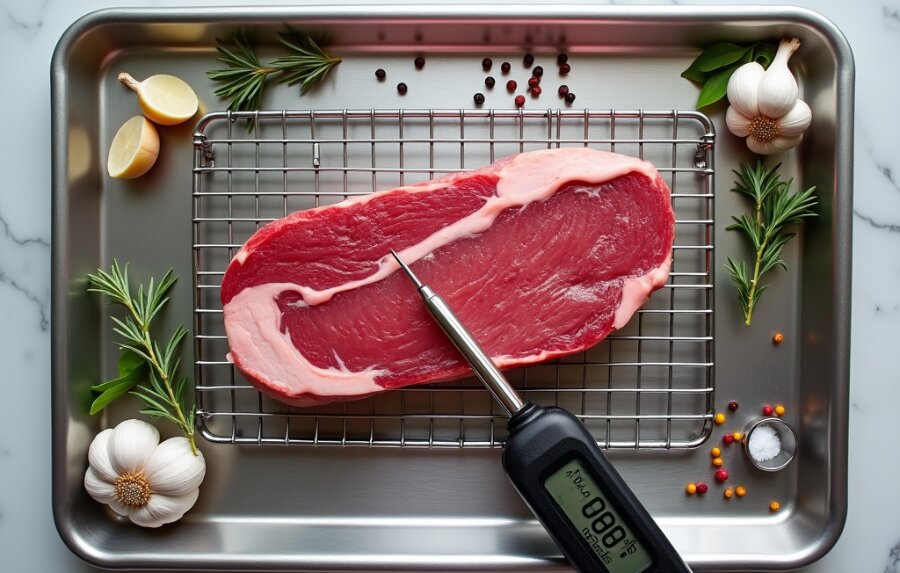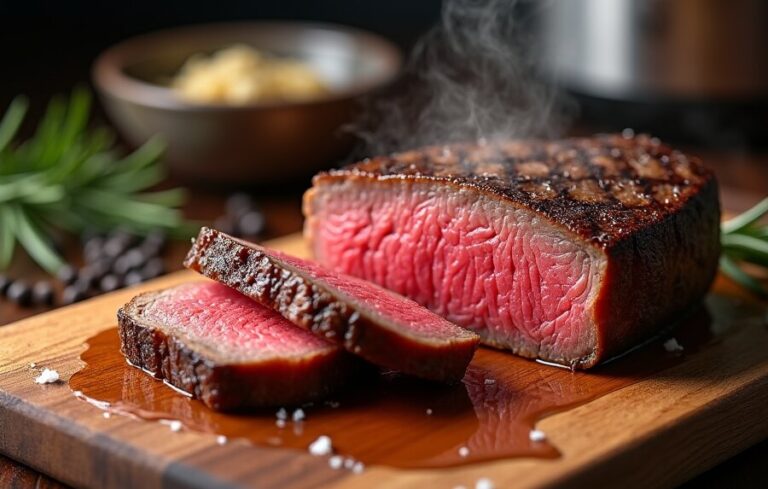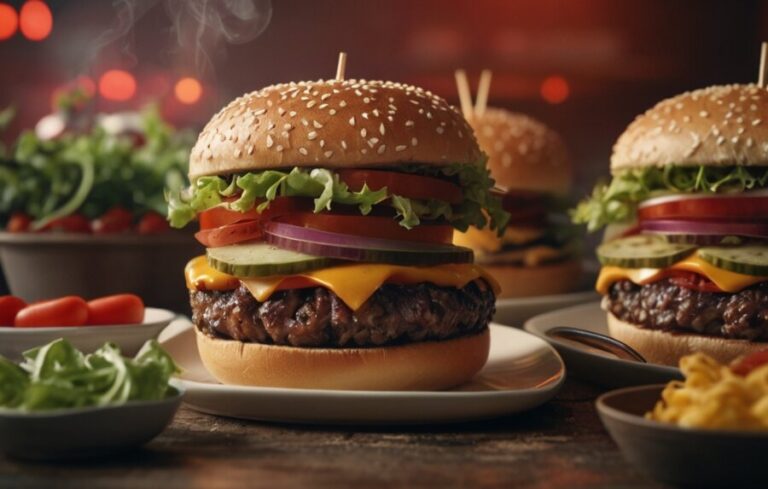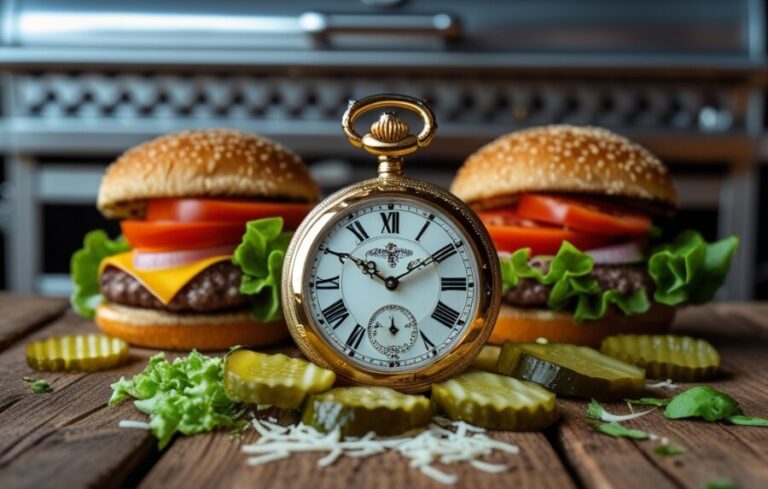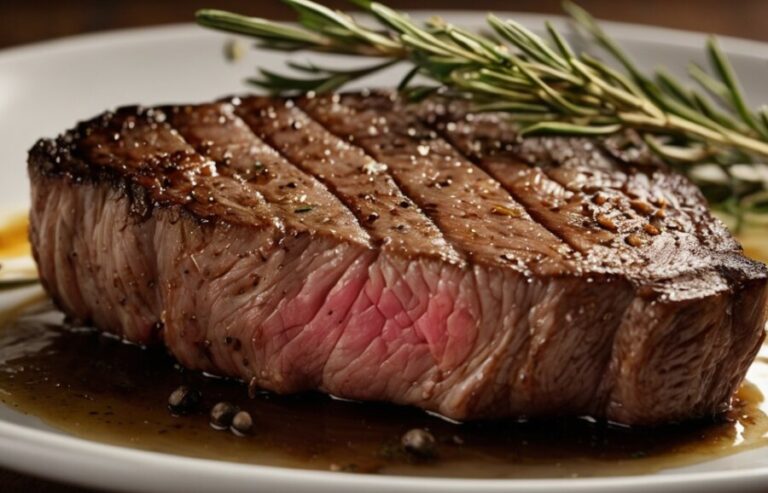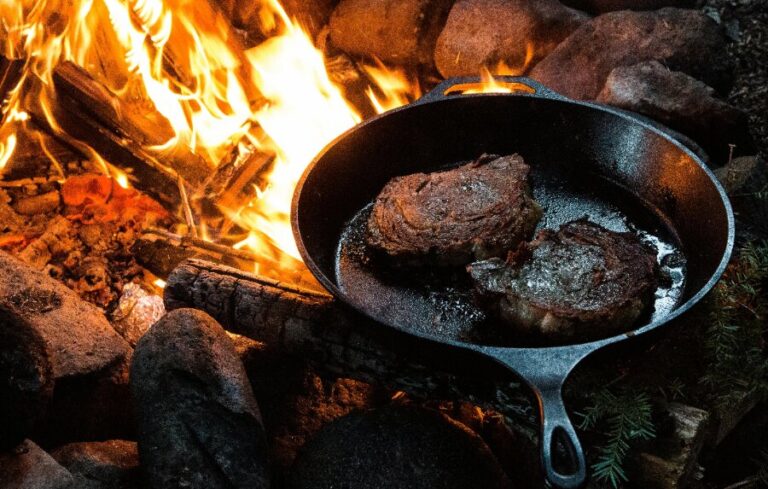Our evaluations and product assessments are conducted using a thorough and unbiased approach. Should you choose to buy any items through our provided links, we might receive a commission Read our disclosures.
Nailing the Reverse Sear for Steak Lovers
What’s Reverse Searing All About?
Alright, let’s talk about how to reverse sear a steak. Ever tried the reverse sear method? It’s a game-changer. With this trick, first, you gently cook your meat at a low temp in the oven or smoker. Once it hits that sweet spot inside, you give it a quick, hot sear to lock in those beautiful grill marks (Over the Fire Cooking).
Here’s the play-by-play: slow-cook your steak at about 250-275 degrees Fahrenheit, usually for 45 minutes to an hour, depending on how thick it is. After it’s done chillin’, crank up your skillet and sear it for 3-4 minutes per side (Jessie Barnes Bernhardt).
Why Reverse Sear?
So, why go through the trouble? Trust me, it’s worth it. First off, the texture is buttery with a capital B. Slow-cooking breaks down those tough bits, letting the juices stay where we want them: inside the steak, not on your plate (Sur La Table).
And here’s the kicker—you get a perfect doneness from edge to edge. No more sad, overcooked border zones. Your steak will be consistently perfect all the way through (Sur La Table).
Plus, you can totally control the final temp of your steak. Whether you like it mooing (rare), a bit pink (medium-rare), or fully done, you can hit that target every single time without guessing (Sur La Table).
Ready to Up Your Steak Game?
Mastering the reverse sear? It’s like having a restaurant-quality steak right at home. If you’re fired up and ready to try it out, check out my detailed guide. Start turning those backyard BBQs into something legendary!
Setting Up for Success: Perfecting the Reverse Sear
Nailing the perfect steak with the reverse sear method ain’t rocket science, but getting it right needs some prep. Here’s my step-by-step on making sure everything’s good to go before you start cooking.
Picking Your Steak
The kind of steak you pick can make or break your dinner. Go for thicker cuts—about an inch and a half or more. These cook more evenly and give you that awesome crust once you sear ’em. Ribeye, New York strip, and filet mignon are my top picks. They’re all packed with flavor and worth every penny.
| Steak Cut | Thickness | Flavor Profile |
|---|---|---|
| Ribeye | 1.5 to 2 inches | Rich and buttery |
| New York Strip | 1.5 to 2 inches | Tender and hearty |
| Filet Mignon | 1.5 to 2 inches | Mild and delicate |
The right steak means you’re already halfway to a juicy, mouthwatering meal.
Preheating: It’s All About Timing
Preheating is key. Set your oven to 275°F. This low temp cooks the steak nice and slow, so no worries about the outside getting burnt.
For the grill, aim between 225-250°F. When your steak hits the right internal temp in the oven, turn up the grill or skillet to high heat (around 500-550°F) for a quick sear—the part that gets you that tasty, crispy crust.
Here’s a quick temp guide for the process:
| Stage | Temperature (°F) |
|---|---|
| Initial Cooking (Oven) | 275 |
| Pre-Searing (Grill) | 225-250 |
| Searing | 500-550 |
Get everything ready, and you’ll breeze through cooking. Want more details? Check out my reverse sear steak recipe to fine-tune your skills with your grill or smoker!
Nailing the Reverse Sear
Got a thing for steak? The reverse sear’s your new best friend. Let’s break it down so you can become a steak god at home.
Slow and Steady in the Oven
First off, fire up your oven to 225°F (about 107°C). This lower temp cooks the steak gently, so you don’t get burnt edges with a raw center. Balance, really.
Stick the steak on a wire rack over a baking sheet—the airflow keeps everything even. Depending on how thick your steak is, you’ll cook it for 30-45 minutes to hit that golden internal temp. Here’s a cheat sheet:
| How You Like It | Temp (°F) |
|---|---|
| Rare | 120-125 |
| Medium Rare | 130-135 |
| Medium | 140-145 |
| Medium Well | 150-155 |
| Well Done | 160+ |
Once it hits the magic number, yank it out and let it chill. Letting it rest is key—let those juices settle so they don’t run everywhere.
Crank Up the Sear
Rested and ready? Time to sear! Heat up a skillet (cast iron if you’ve got it) until it’s blazing hot. Add a little oil to keep things smooth. Now, you’re working fast. Sear each side for about 1-2 minutes.
While it’s sizzling, throw in some butter and baste away. That’s your ticket to a golden, tasty crust. Don’t skip the edges; render that fat for extra flavor.
For detailed steps, hit up my reverse sear steak recipe and reverse sear cast iron pages.
This method nails a juicy inside with a perfect crunchy exterior. Master this, and your steak game will beat any fancy restaurant.

Steak Perfection with Reverse Searing
Cooking the perfect steak at home can feel like chasing a unicorn, especially if you’re looking to attempt the reverse sear method. Don’t worry though—nail the doneness, and you’re halfway to that top-tier steakhouse experience.
The Temperature Sweet Spot
To get that melt-in-your-mouth steak, you need to hit those internal temperatures just right. Here’s a quick cheat sheet for you:
| Steak Doneness | Target Temp (°F) |
|---|---|
| Rare | 120-130 |
| Medium-Rare | 130-135 |
| Medium | 140-145 |
| Medium-Well | 150-155 |
| Well-Done | 160+ |
When reverse searing, I start the steak at a cozy 120°F before pulling it off the heat. This way, it continues to cook through even as it rests. For your medium-rare lovers, aim for the steak to sit at around 90 to 95°F before the final sear. Trust me, a good meat thermometer is your best friend here.
Give It a Breather
After its initial cook, let that steak chill out on the counter for a bit. About 10 minutes does the trick. This downtime lets those tasty juices spread out evenly, making every bite tender and juicy. Skipping this step is like running a marathon without stretching—just don’t do it.
Taking those few extra minutes pays off big time, giving you a steak that’s not only flavorful but also juicy enough to make your mouth water.
Ready to Give It a Go?
If you’re itching to try this method out, check out my reverse sear steak recipe. It’s packed with all the steps you need, from prepping the meat to getting that perfect, crusty sear. Give it a go and taste the difference!
Tips and Tricks for Perfect Steaks
Want to nail the reverse sear every time? I’ve got some tricks up my sleeve that’ll make those steaks taste like they came straight from your favorite steakhouse.
Punching Up the Flavor
Seasonings are the magic touch. I swear by coarse sea salt and freshly cracked black pepper. And hey, sometimes when I’m feeling fancy, I’ll add a dash of garlic powder, onion powder, or even chop up some rosemary.
Here’s my go-to seasoning blueprint:
| Seasoning | Amount (for 1 steak) |
|---|---|
| Coarse Sea Salt | 1 tsp |
| Black Pepper | 1/2 tsp |
| Garlic Powder | 1/2 tsp |
| Onion Powder | 1/4 tsp |
| Fresh Rosemary | 1 tsp (chopped) |
I slap on the seasonings about 30 minutes before cooking. This lets the flavors soak in and brings the steak to room temp for even cooking.
Want that smoky, grill-kissed flavor? Fire up the grill and set up an indirect heating spot. Cook the steak slow until it hits 100 to 125ºF inside, then sear it hot for those charred, tasty marks.
Trying Out Different Cuts
Filet mignon and New York strip are classics, but why stop there? Tomahawk, porterhouse, and skirt steaks all bring something special to the table.
Here’s how some top-notch cuts stack up:
| Steak Cut | Flavor Profile | Best Doneness |
|---|---|---|
| Filet Mignon | Tender, mild | Medium-rare |
| New York Strip | Rich, beefy | Medium |
| Tomahawk Steak | Intense, meaty | Medium-rare |
| Porterhouse Steak | Juicy, flavorful | Medium |
| Skirt Steak | Beefy, slightly chewy | Medium-rare |
Playing around with different cuts and cook times has taught me that variety is the spice of life—and steak. Each cut has its own best cooking time to hit that sweet spot of doneness. For a deep dive into the reverse sear method, check out our detailed guide.
Following these tips and trying out different steaks has seriously upped my grilling game. Now, every meal feels like a culinary victory, with steaks that hit the flavor jackpot every time.
Advanced Techniques
Adding Smoky Flavors
Want to make your steaks taste like they’ve had a love affair with a campfire? I got you. Fire up the grill and set up a side for indirect heating. You’ll want to cook your steaks slowly on the cooler side until they hit that sweet spot between 100 and 125ºF (38 to 52ºC) inside. This slow cook time lets the meat soak up all that smoky goodness. Then, slap those beauties over the flames to sear them until they’ve got those drool-worthy char marks. Need the nitty-gritty details? Check out my reverse sear steak recipe.
| Temperature Range | Internal Steak Temperature |
|---|---|
| Rare | 120 – 130ºF (49 – 54ºC) |
| Medium Rare | 130 – 135ºF (54 – 57ºC) |
| Medium | 135 – 145ºF (57 – 63ºC) |
| Medium Well | 145 – 155ºF (63 – 68ºC) |
| Well Done | 155ºF (68ºC) and above |
Comparing to Sous Vide
Ever tried sous vide for your steak? Yeah, it’s fancy, but let’s talk straight. Reverse sear gives you tasty results without all the fuss or fancy gadgets. No need for immersion circulators or vacuum seals here. Just a grill or an oven, and you’ve got yourself a steak with a glorious crust, every single time.
Don’t get me wrong, sous vide has its moments. But reverse searing lets me keep it simple while still nailing that perfect cook. Seriously, it feels great to have complete control over your steak, knowing you’ll end up with a deliciously crispy exterior and a juicy inside. Curious about how it stacks up against sous vide? Check my guide on reverse sear vs. sous vide.
Whichever way you cut it, reverse sear is an easy win for flavor without the fuss. To master the method, head to my reverse sear steak guide.


